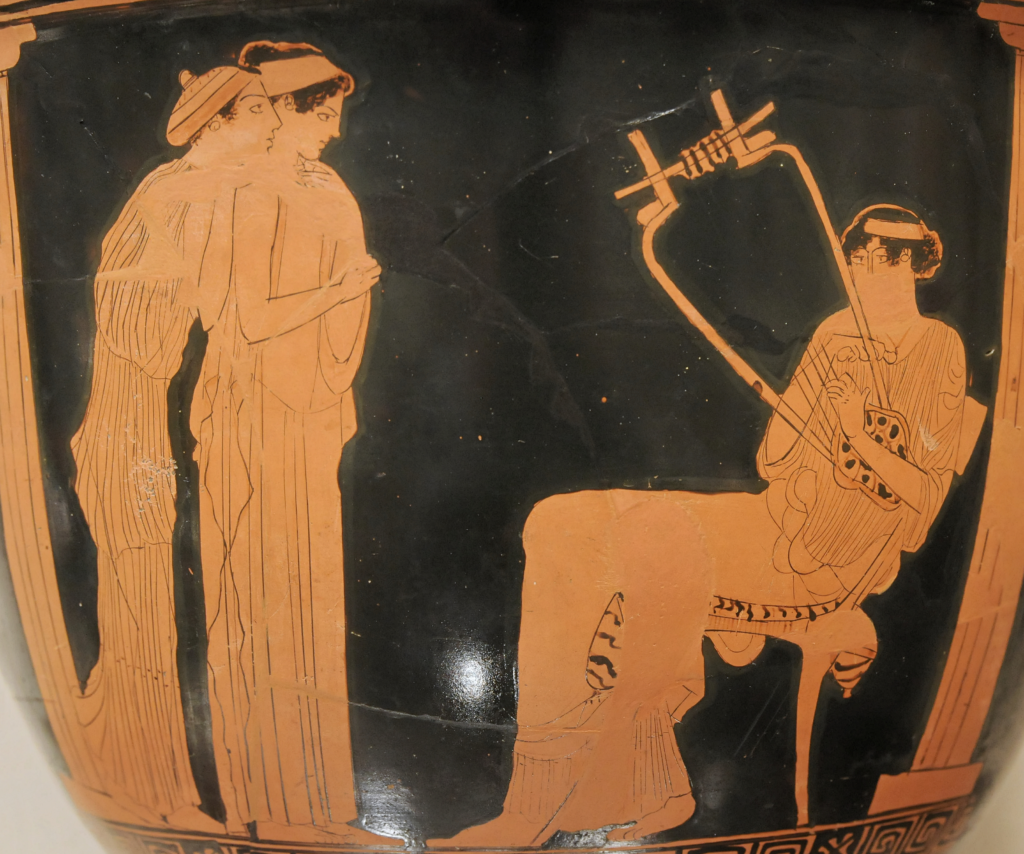
From Book III of The Republic, by Plato (circa 375 BCE, translation by F. M. Cornford). Socrates is speaking with Glaucon:
One thing, however, is easily settled, namely that grace and seemliness of form and movement go with good rhythm; ungracefulness and unseemliness with bad.
Naturally.
And again, good or bad rhythm and also tunefulness or discord in music go with the quality of the poetry; for they will be modelled after its form, if, as we have said, metre and music must be adapted to the sense of the words.
Well, they must be so adapted.
And the content of the poetry and the manner in which it is expressed depend, in their turn, on moral character.
Of course.
Thus, then, excellence of form and content in discourse and of musical expression and rhythm, and grace of form and movement, all depend on goodness of nature, by which I mean, not the foolish simplicity sometimes called by courtesy ‘good nature’, but a nature in which goodness of character has been well and truly established.
Yes, certainly.
So, if our young men are to do their proper work in life, they must follow after these qualities wherever they may be found. And they are to be found in every sort of workmanship, such as painting, weaving, embroidery, architecture, the making of furniture; and also in the human frame and in all the works of nature: in all these grace and seemliness may be present or absent. And the absence of grace, rhythm, harmony is nearly allied to baseness of thought and expression and baseness of character; whereas their presence goes with that moral excellence and self-mastery of which they are the embodiment.
That is perfectly true.
Then we must not only compel our poets, on pain of expulsion, to make their poetry the express image of noble character; we must also supervise craftsmen of every kind and forbid them ‘to leave the stamp of baseness, licence, meanness, unseemliness, on painting and sculpture, or building, or any other work of their hands; and anyone who cannot obey shall not practise his art in our commonwealth. We would not have our Guardians grow up among representations of moral deformity, as in some foul pasture where, day after day, feeding on every poisonous weed they would, little by little, gather insensibly a mass of corruption in their very souls. Rather we must seek out those craftsmen whose instinct guides them to whatsoever is lovely and gracious; so that our young men, dwelling in a wholesome climate, may drink in good from every quarter, whence, like a breeze bearing health from happy regions, some influence from noble works constantly falls upon eye and ear from childhood upward, and imperceptibly draws them into sympathy and harmony with the beauty of reason, whose impress they take.
There could be no better upbringing than that.
Hence, Glaucon, I continued, the decisive importance of education in poetry and music: rhythm and harmony sink deep into the recesses of the soul and take the strongest hold there, bringing that grace of body and mind which is only to be found in one who is brought up in the right way. Moreover, a proper training in this kind makes a man quick to perceive any defect or ugliness in art or in nature. Such deformity will rightly disgust him. Approving all that is lovely, he will welcome it home with joy into his soul and, nourished thereby, grow into a man of a noble spirit. All that is ugly and disgraceful he will rightly condemn and abhor while he is still too young to understand the reason; and when reason comes, he will greet her as a friend with whom his education has made him long familiar.

Leave a Reply